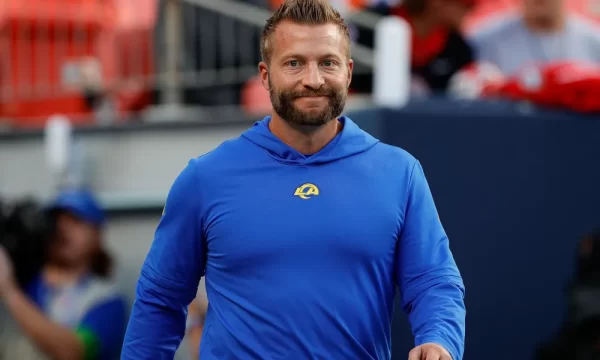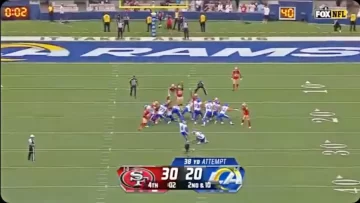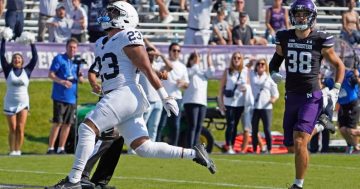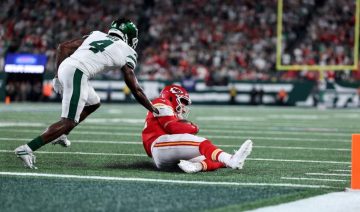Are Teams Purposely Trying to Cover the Spread?

It’s a great question. A couple of recent college football and NFL games come to mind. With the rise of sports betting and the exponential increase in the amount of betting information available for virtually every single game on a schedule, is it possible that teams are knowingly trying to cover a point spread?
On the opposite side, one could argue that maybe teams are purposely not trying to cover point spreads. Case in point, the Chiefs-Jets game last night on Sunday Night Football. More on that in a moment. One of the reasons sports betting remained illegal in the US (except in Vegas) was for this very reason. Would players and/or teams work to benefit from sports betting markets?
If you ask yourself “why would a team purposely try and cover a point spread,” the only answer that makes sense is to win a bet. It has happened before. The Black Sox, Boston College point shaving, Tim Donaghy…all examples of sports betting scandals. Players, coaches, and officials follow a code, or at least they are supposed to. So, are teams purposely trying to cover the spread?
49ers 30, Rams 23
In Week 2 of the NFL regular season, the Rams and 49ers played an NFC West Division rivalry game. The Niners, of course, are a favorite to win the division, the NFC, and Super Bowl LVIII. San Francisco led 30-20 with 2:59 remaining in the game after Jake Moody hit his third field goal of the game.
 After trading possessions, the Rams got the ball back with 1:34 left to play. QB Matthew Stafford led the Rams down the field. LA got a first down at the Niners’ 20-yard line. With no timeouts left, Stafford spiked the ball to stop the clock with :04 remaining. The Rams Brett Maher drilled a 38-yard field goal on the game’s final play.
After trading possessions, the Rams got the ball back with 1:34 left to play. QB Matthew Stafford led the Rams down the field. LA got a first down at the Niners’ 20-yard line. With no timeouts left, Stafford spiked the ball to stop the clock with :04 remaining. The Rams Brett Maher drilled a 38-yard field goal on the game’s final play.
There was no question that San Francisco was going to win the game. With the field goal, the Rams wound up covering the -7.5 (-8 at some books) spread. Many believe Rams head coach Sean McVay kicked the field goal in order for the Rams to cover. Did he?
NFL Tiebreaker Rules
Now, McVay didn’t give a great answer when asked about the Rams purposely trying to cover. His answer should have been based around this – NFL tiebreaker rules.
At the end of the NFL season, when two teams are tied (whether for a playoff spot or draft order), there are rules in place to break the tie. The first, of course, is head-to-head play. In a divisional matchup like this, it’s possible that the two teams split. Then, you go to the next tiebreaker, which is winning percentage in division games.
It usually doesn’t get this far, but No. 9 and No. 10 on the list involve points. No. 9 is points in common games. Since the Rams and Niners will play each other twice, it would make sense for the Rams to try and score as many points as possible…maybe even kick a meaningless field goal on the game’s final play.
Penn State 41, Northwestern 13
Depending upon the sportsbook, No. 6 Penn State was a -26 to -27.5 favorite over Northwestern last Saturday. The Nittany Lions were in a dogfight in the first half, but then pulled away in the second half. Penn State led 34-13 with a little over four minutes remaining in the game. Head coach James Franklin put backup QB Beau Pribula in the game.
 The Nittany Lions took over on offense after Northwestern QB Brendan Sullivan threw an interception. There was 2:26 remaining in the game. On the first play from scrimmage, Pribula hit Trey Potts for a 30-yard touchdown. Just like that the 21-point advantage ballooned to 28. Those who backed PSU to cover were winners.
The Nittany Lions took over on offense after Northwestern QB Brendan Sullivan threw an interception. There was 2:26 remaining in the game. On the first play from scrimmage, Pribula hit Trey Potts for a 30-yard touchdown. Just like that the 21-point advantage ballooned to 28. Those who backed PSU to cover were winners.
Did Franklin purposely try to cover? Franklin denied it and said he wanted to give his No. 2 quarterback the opportunity to play and score. Interestingly, the game total was set at 52. The late touchdown also benefited Over bettors. This wouldn’t be the first time the spread was mentioned in a question posed to Franklin. In 2015 he stated “Point spreads and all those things, I don’t even understand them.”.
Food for Thought
In Sunday Night Football last night, Kansas City led the New York Jets 23-20. With 7:24 seconds to play, the Chiefs took over at the Jets 47-yard line. With the help of a successful 3rd-and-8 scramble by Patrick Mahomes, the Chiefs were able to run out the clock.
 It was no ordinary scramble though. Kansas City had the ball at New York’s 11-yard line. Mahomes took off when he couldn’t find a receiver. He could have easily scored, but chose instead to slide at the Jets 2-yard line. KC took knees on the game’s final two plays and failed to cover the spread.
It was no ordinary scramble though. Kansas City had the ball at New York’s 11-yard line. Mahomes took off when he couldn’t find a receiver. He could have easily scored, but chose instead to slide at the Jets 2-yard line. KC took knees on the game’s final two plays and failed to cover the spread.
That brings up an interesting concept. Football is one of the few sports – and maybe the only one – where teams intentionally try not to score. It’s illogical really. Winning teams work to outscore their opponents. That’s how they achieve wins.
In baseball, teams with big leads in the top of the 9th inning don’t intentionally strike out. What if the opponent rallies in the bottom of the inning? How often do you see a hockey player intentionally miss a shot at an empty net? Yes, in basketball teams do hold the ball late in games, but with the advent of shot clocks, they can still score late in games.
Are teams purposely trying to cover point spreads? It’s surely possible. Proving it could be difficult. For now, we’ll leave it up to you.

















